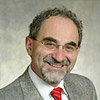People
RG1 Leader

Eli Yablonovitch, Director of the NSF Center for Energy Efficient Electronics Science (E 3S)
Lawrence Berkeley National Laboratory
Eli Yablonovitch is the RG1 Leader in the LMI-EFRC. After a career in industry and in Universities, he is now Professor of Electrical Engineering and Computer Sciences at UC Berkeley, where he holds the James & Katherine Lau Chair in Engineering. He is also Director of the NSF Center for Energy Efficient Electronics Science (E3S), a multi-University Center based at Berkeley.
In his photovoltaic research, Yablonovitch introduced the 4(n squared) light-trapping factor that is in worldwide use for almost all commercial solar panels. This factor increased the theoretical limits and practical efficiency of solar cells. 4n2 is based on statistical mechanics, and is sometimes called the “Yablonovitch Limit.”
Yablonovitch introduced the idea that strained semiconductor lasers could have superior performance due to reduced valence band (hole) effective mass. Almost all semiconductor lasers use this concept, including DVD players, red laser pointers, and internet telecommunications. Nearly every click on the internet communicates through this idea. Yablonovitch is regarded as a Father of the Photonic BandGap concept, and he coined the term "Photonic Crystal". The geometrical structure of the first experimentally realized Photonic bandgap, is sometimes called “Yablonovite”.
Prof. Yablonovitch is a Fellow of the Optical Society of America, the IEEE, and the American Physical Society. He was elected a Member of the National Academy of Engineering, the National Academy of Sciences, the American Academy of Arts & Sciences, and as Foreign Member of the Royal Society of London. He has been awarded the Adolf Lomb Medal, the W. Streifer Scientific Achievement Award, the R.W. Wood Prize, the Julius Springer Prize, the IET Mountbatten Medal (UK), the IEEE Photonics Award, the Harvey Prize (Israel), and the Rank Prize (UK). He also has an honorary Ph.d. from the Royal Inst. of Tech., Stockholm Sweden, and from the Hong Kong Univ. of Sci. & Technology
